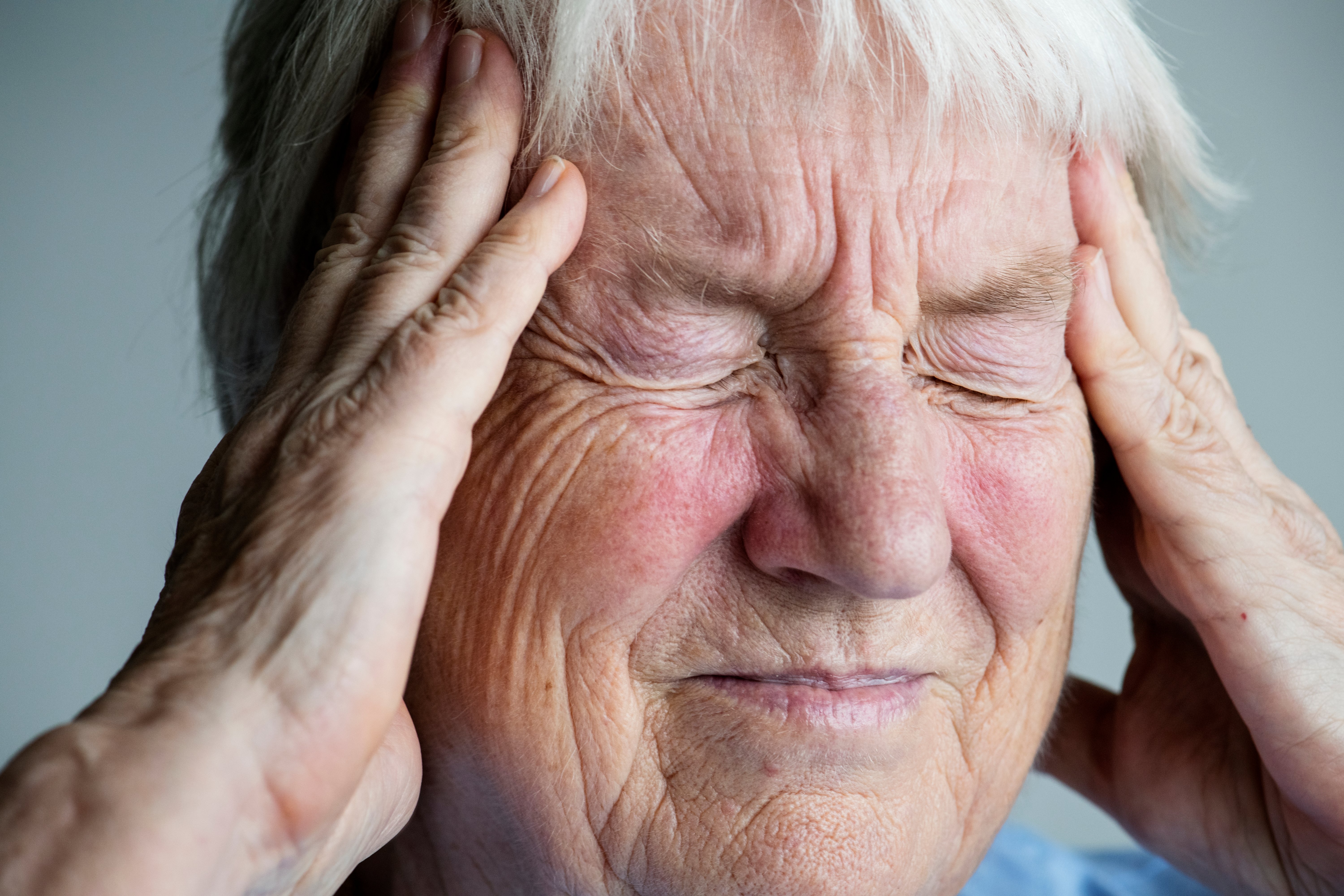
A migraine can cause throbbing pain or a pulsing sensation, usually on just one side of the head. It's often accompanied by nausea, vomiting, and extreme sensitivity to light and sound. Migraine attacks can cause significant pain for hours to days and can be so severe that the pain is disabling.
Medications can help prevent some migraines and make them less painful. Talk to your doctor about different migraine treatment options if you can't find relief. The right medicines, combined with self-help remedies and lifestyle changes, may help.
Symptoms
Migraines may progress through four stages: prodrome, aura, headache and post-drome, though you may not experience all stages.
Prodrome
One or two days before a migraine, you may notice subtle changes that warn of an upcoming migraine, including:
- Constipation
- Mood changes, from depression to euphoria
- Food cravings
- Neck stiffness
- Increased thirst and urination
Aura
Auras are symptoms of the nervous system. Examples of aura include:
- Visual phenomena, such as seeing various shapes, bright spots, or flashes of light
- Vision loss
- Weakness or numbness in the face of one side of the body
- Hearing noises
- Pins and needles sensations
Attack
A migraine usually lasts from four to 72 hours if untreated. The frequency with which headaches occur varies from person to person. Migraines may be rare, or strike several times a month. During a migraine, you may experience:
- Pain of throbbing or pulsing on one side or both sides of your head
- Nausea and vomiting
- Blurred vision
- Sensitivity to light, sounds, and sometimes smells and touch
- Lightheadedness, sometimes followed by fainting
Post-drome
The final phase, known as post-drome, occurs after a migraine attack. You may feel drained and washed out, while some people feel elated. For about 24 hours, you may also experience:
- Confusion
- Moodiness
- Dizziness
- Weakness
- Sensitivity to light and sound
Do’s and Don’ts
Do: Sleep Smart. Sleep is a tricky trigger. Too much or too light of it can bring on a migraine. The key is to keep your downtime constant. Figure out your sleep schedule sweet spot and stick with it.
Don’t Skip Meals. When your blood sugar drops, your brain feels it first. Hunger is a common cause of headaches. Be sure you’re giving your body the fuel it needs to work all day.
Do: Watch the Caffeine. This pick-me-up is both a trigger and a treatment for migraines. Some headache meds add caffeine because it boosts the effectiveness of the pain relievers. The problem comes when you have too much. You could set yourself up for a rebound headache, so be careful with caffeine.
Don’t Over or Underdo Exercise. Sometimes too much exercise can spark a migraine. But regular, moderate activity will give your overall health a boost and help you stay headache-free. Remember to start slowly and increase your activity level gradually.
Don’t Dry Out: Even mild dehydration can spell trouble if you get migraines often. Give yourself a goal of eight glasses of water a day to keep the head pain away. Limit caffeine-containing and alcoholic beverages since they can dehydrate you.
Don’t Stare at Screens. Hours in front of a computer or TV can strain your eyes. For some people with migraine, eyestrain can trigger head pain. Take breaks often. Stretch, close your eyes, and get up to get your blood flowing. That’ll help stop a migraine before it starts.
Do: Track Your Attacks. You can’t avoid your triggers if you don’t know what they are. Keep a migraine diary and write down what you eat, your sleep patterns, medications you take, and any symptoms you have. This will help your doctor come up with a prevention and treatment plan, too.
Don’t Grit Your Teeth. Teeth grinding and jaw clenching are common migraine triggers. If you’re doing it in your sleep, talk to your dentist about a device that helps hold your jaw in place and prevent problems. If daytime grinding gives you pain, try to pinpoint the source of stress and work to lower it.
Do: Be Wary of Wine. Alcohol is supposed to relax you, right? But for some people, the opposite can happen. Certain ingredients in drinks like red wine may cause headaches instead. Watch for a reaction when you drink -- you may be able to have a glass from time to time, or you may need to avoid booze altogether.

